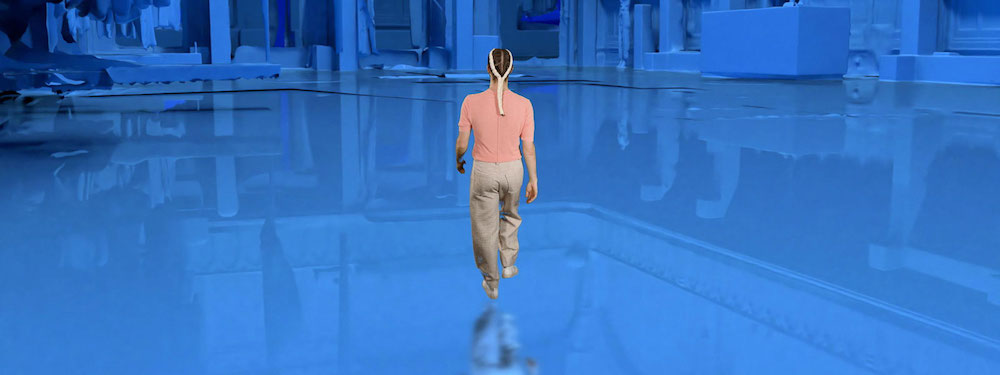Streaming on miff.com.au.
15 August 2021.
As part of the Melbourne International Film Festival, there was a special screening of short dance films called Bodies in Motion.
In The Prelude, presented by Phillip Adams BalletLab and US choreographer Walter Dundervill, there is a great concentration on texture — of drapes, of the bedding (cloth of gold that becomes tied up sculptures). The featured dancer, Michelle Heaven, is dressed in green and we see her barefoot. There are flowing movements of both the dancer and the materials. At one point, she apparently creates a shrine like a cradle. She sits in a chair and is interviewed about the making of the film, which has a rumbling, oppressive soundtrack. It ends with her posed in a skin coloured leotard.
In As One by Jessie Oldfield, the dancer is well rugged up in winter gear in a forest. Shelley Farthing-Dawe’s photography is most atmospheric. We follow her nervously walking toward a car. She bangs on the door, and a male dancer (Adam Murfet) slides out angry and coughing (he was trying to commit suicide with the car fumes). Erin McKimm’s soundscore is ominous. Murfet stumbles, almost falls but grabs hold of a tree, punches it and walks furiously away. She catches up with him and tries to help. They do strong, angular, almost fighting movements; he does amazing double flip rolls ending up on the forest floor. The mood changes – he walks around her kicking the leaves, and then they do a kicking dance as if from a vaudeville performance. He goes under her arm and they start to waltz – then stand still – cut to blurry shots of trees. We are given a sense of hope that all will be okay.
Poleng by Naina Sen is very powerful and emotional, about the quest for identity and acceptance and fighting internalised racism. Sen yearns to belong. We can see the Indonesian dance influence with the pulsating fluid movements, swirling soft arms and the arms and hands that delicately unfurl like a flower. We see Sen being formally dressed in traditional Indonesian costume and makeup for a glorious Indonesian dance performance, and mention is made of her mother and how her family were peripatetic; family photos are dug out and presented. This is contrasted with Sen in a black and white checked dress performing sudden fast itchy twitchy movements as she explores and tries to change her skin, talking about how when she was younger she wanted to be blonde and blue eyed.
Multiply, directed by Rhys Graham, is based in 2020 Melbourne in one of the November COVID lockdowns. It looks at the creation of a large outdoor work by Stephanie Lake set in inner-suburban Melbourne’s Prahran Square, involving 400 dancers. We follow ‘the making of‘ the work, with interviews with Lake and other dancers who will lead the performance (who we see in their various rooms doing stretches, or twists, or slithery floorwork, windmill arms, or splashing in a pool, for example). There is rehearsal footage and the anxious awaiting to see if the performance will actually proceed. (Yes! Everyone is masked, has to sign in QR codes, there is social distancing, and it is Auslan interpreted!) The dancers are divided into three teams — red, blue and white. Hand on heart, ‘swan‘ arms, hugging themselves bounce, bounce, the ‘chicken‘ dance, clicking fingers, jump, push, marching in place, side bends, celebratory clapping, swinging a plastic bag above their head… They all lie collapsed on the ground and then eventually sit up.
Commissioned by Chunky Move, BONANZA! is based in the digital world and blends artist dialogue, dance and film, questioning the division between mind and body and what is real. It examines the use of ritual and a sacred place, algorithms and whether there can be multiple selves and if the body can be modified. How does a computer understand movement? At times, only small parts of a body are visible — a head or an arm. Drones and avatars (a talking ram) are used, and dancers fly, jump, march in precise lines, jump as if trampolining, spin and whirl, ending in the spectacular forming of a spiral curved shape as the final tableaux.
By Lynne Lancaster of Dance Informa.

















